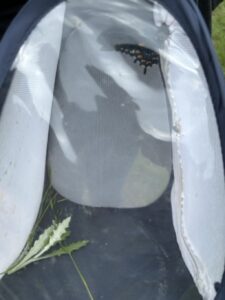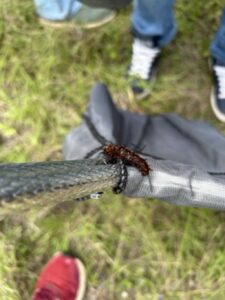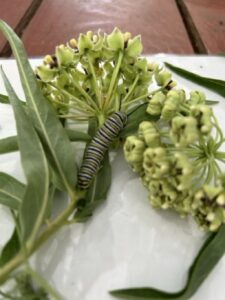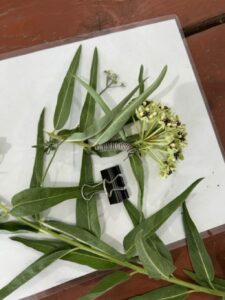Week 8: When Observation Sparks Wonder
Week 8 was a reminder that when kids truly see something, when they pause to observe, it can spark something deeper than just a passing moment on a field trip. Even though the week began quietly with a couple of work-from-home days, things quickly picked up and became incredibly meaningful.


On Wednesday, I helped lead an insect survey with a visiting field trip group. What made this day stand out was that, for the first time, some of the kids caught flying insects—like butterflies and even a dragonfly! Normally, when one butterfly crosses the prairie, there’s a collective shout of “Butterfly!” and a wild chase begins. Most of the time, the butterfly gracefully dodges every net. But this time, a student caught one quietly, and only came over once it was safely in the container to show everyone. It was such a clever and approach that respected the butterfly as well. One group even spotted the caterpillar version of the same butterfly, which opened the door to a spontaneous lesson on insect life cycles. It was one of those rare hands-on moments where students got to witness a full story, seeing both the beginning and end of a butterfly’s transformation.


And the best feedback came straight from the kids! Some asked, “Can I come back after lunch?” or told their parents, “Can I stay a little longer before heading back to school?” One teacher later told me that normally the kids are counting down to lunch or ready to leave, but today they didn’t want the day to end. Their curiosity and eagerness to stay longer reminded me just how powerful time in nature can be.
Thursday’s field trip had a smaller group, which allowed us to adapt and create more one-on-one moments. We split into two subgroups, rotating between birding activities. I worked alongside Mr. John, the master naturalist who led the skulls station, and Ms. Christina, who led birding. At one point, we spotted a painted bunting—a brilliant, rainbow-colored songbird that was a real treat! But I love how, for kids, every bird is exciting. Even when we spotted more common birds, like a cardinal, it was a big deal. When we saw the painted bunting and we tried to get them to see it on the feeder they kept calling us over to look at a cardinal in the grass below the feeder which mesmerized them even more before they looked at the bunting! When they realized the bird in the tree was the same one we had just discussed—and they remembered details like beak shape, it became a full-circle moment.
On Friday, I began helping design a new worksheet for the birding station. The current bird guides include all the species that might be seen, organized by season—but that can be overwhelming. So we’re working on a simpler, visual version that highlights the most common birds likely to be spotted on-site: cardinals, Carolina wrens, blue herons, and more. The goal is to help students feel more successful and connected. When a child sees a bird we just pointed out on paper and then spots it in real life, it becomes something special. That recognition builds pride in finding the bird and deeper excitement for the kids.
Looking back, this week proved that observation is just the start. What truly matters is when those observations spark curiosity, questions, and a desire to stay a little longer. Whether they were matching birds to their guide or chasing dragonflies after lunch, the kids weren’t just learning, they were living the experience. I can’t wait to see what Week 9 brings as the project wraps up.
Thanks for reading, see you in Week 9!
